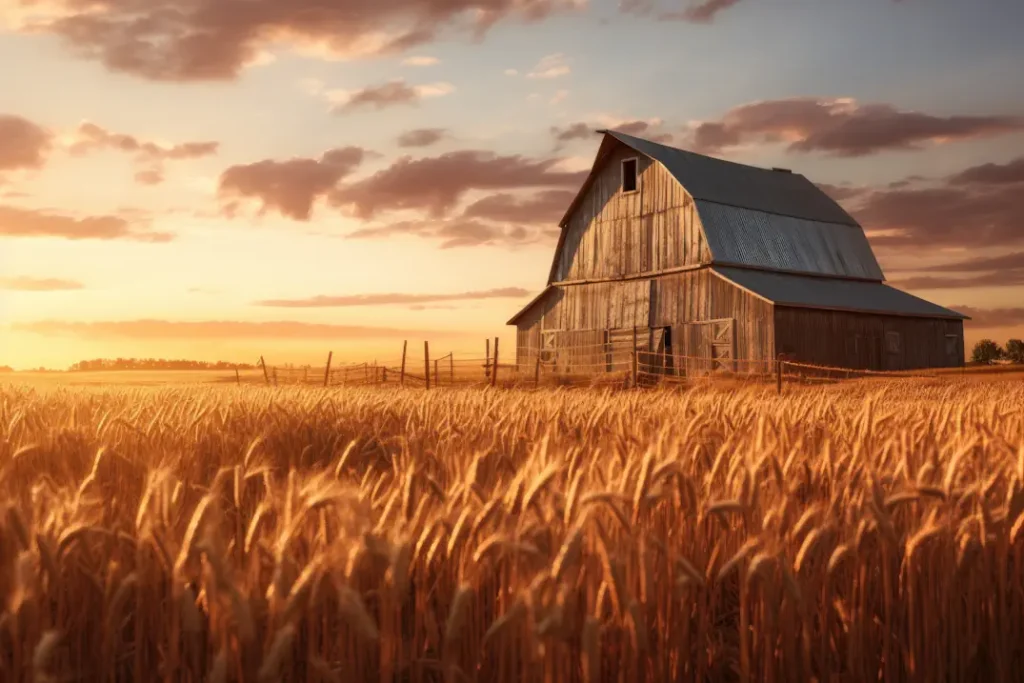Determining the age of a barn can be a fascinating journey into the past, revealing the history and evolution of agricultural practices. Whether you’ve recently acquired a property with an old barn or you’re simply curious about the history of a family farm, there are several methods to estimate the age of these rustic structures. This article will guide you through various clues and techniques to help you uncover the age of your barn.

Farm Tax Records
One of the most straightforward ways to estimate the age of your barn is by examining farm tax records. Local tax records often include the construction dates of buildings on a property. If your barn was built at the same time as the main house, these records might provide a clear date. However, barns were sometimes added later, so this method might not always be accurate. You can check with your local county assessor’s office or historical society for these records. For more information on accessing historical tax records, visit the National Archives.
Architectural Style and Construction Techniques
The architectural style and construction techniques used in your barn can provide significant clues about its age. Here are some key features to look for:
Roof Style
- Gable Roofs: Common in barns built before the 1860s, gable roofs have two sloping sides that meet at a ridge. These barns were typically smaller and used for local agricultural needs.
- Gambrel Roofs: Introduced in the late 19th century, gambrel roofs have two slopes on each side, with the lower slope being steeper. This design allowed for more storage space, particularly for hay.
Framing Methods
- Timber Framing: Early barns often used timber framing, with large wooden beams joined by mortise and tenon joints. This method was prevalent until the mid-19th century.
- Balloon Framing: Introduced in the mid-1800s, balloon framing used lighter, machine-sawn lumber and nails, making construction faster and less labor-intensive.
Siding and Materials
- Hand-Hewn Beams: If your barn has beams with visible axe marks, it likely dates back to the early 1800s or earlier.
- Circular Saw Marks: Circular saw marks indicate that the wood was cut using a circular saw, which became common in the mid-19th century.
Carved Dates and Inscriptions
Sometimes, barns have dates carved into their beams or foundation stones. While these dates can provide clues, they are not always reliable. The date might indicate when a modification was made rather than the original construction date. Look for supporting evidence to verify any dates you find.
Historical Maps and Aerial Photos
Historical maps and aerial photos can be valuable resources for dating your barn. These documents can show when buildings appeared on the landscape. The US Geological Survey provides access to historical topographic maps and aerial photographs that can help you trace the history of your property.
Oral Histories and Local Knowledge
Talking to long-time residents or previous owners can provide valuable insights into the history of your barn. Oral histories can sometimes fill in gaps that official records and physical evidence cannot. Local historical societies or agricultural extension offices can also be excellent resources for gathering information.
Dendrochronology
For a more scientific approach, dendrochronology, or tree-ring dating, can be used to determine the age of the wood in your barn. This method involves analyzing the growth rings in the wood to determine when the trees were cut. While this technique can be highly accurate, it requires specialized knowledge and equipment. Universities with forestry or archaeology departments, such as North Carolina State University, often offer dendrochronology services.
Conclusion
Determining the age of your barn can be a rewarding endeavor, connecting you to the history of your property and the broader agricultural heritage of your region. By examining tax records, architectural styles, construction techniques, and other clues, you can piece together the story of your barn. Whether your barn is a relic from the early 1800s or a more recent addition, each structure has its own unique history waiting to be discovered.

